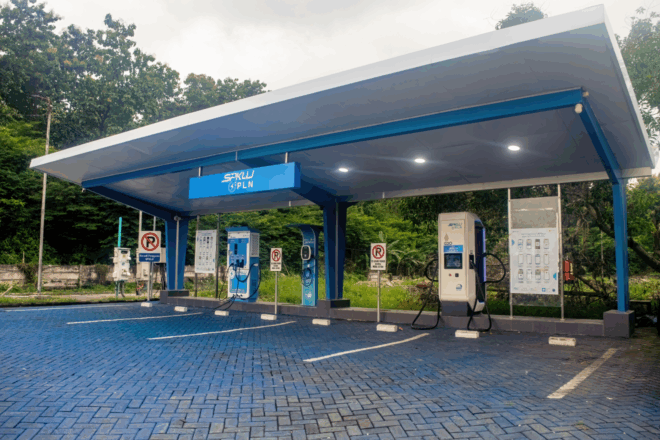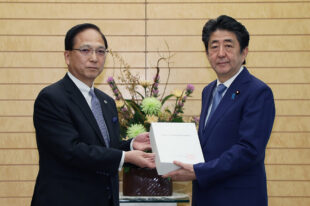Auditing Infrastructure in Indonesia: Addressing Challenges in Closing the Infrastructure Investment Gap

Authors: Indah Noor Hafidias, MBA, CFE, CISA, Muhammad Septian Wicaksono, MA, CFE, GRCA
Introduction
Infrastructure is a fundamental part of economic growth, contributing to approximately 14% of the global gross domestic product (GDP)1. The lack of robust infrastructure can have wide-ranging consequences, affecting societal risks such as societal polarization, health and well-being, inequality and lack of economic opportunity or unemployment2. The Word Economic Forum (WEF) stated that insufficient public infrastructure ranks among the top 20 global risks. Given its significance, leveraging infrastructure is essential for fostering economic development.
In developing countries, the multiplier effect of infrastructure spending is often greater than in Western economies3. In Indonesia, infrastructure development is a national priority, but the investment gap is large, with only 37% of the government budget allocated to infrastructure. As a result, the Indonesian government has shifted its approach in the last five years, using public funds as a last resort4.
To support the government in achieving the goals in the National Medium-Term Development and the Sustainable Development Goals (SDGs), Supreme Audit Institution (SAI) of Indonesia carries an important role in auditing various government initiatives to close the infrastructure investment gap. This article showcases audits finding and recommendations in key areas like communication, electricity, and transportation which have significant impact on developing nations like Indonesia5:
- Auditing the Financing of Infrastructure Development Though Government Bonds and Foreign Loans
- Auditing the Effectiveness of Public-Private Partnerships (PPP) In Closing the Infrastructure Investment Gap
- Auditing the Innovation in Electricity Infrastructure for Electric Vehicles
- Auditing the Transition of the Broadcasting Service to Strengthen the Digital Public Infrastructure
Auditing the Financing of Infrastructure Development Through Government Bonds and Foreign Loans
To meet the growing demand for infrastructure and to boost economic growth, the government has taken loans through regular government bonds, government sharia bonds, and foreign loans. SAI Indonesia conducted a special purpose audit to assess the effectiveness of the loan management in 2020-2022 to finance the urban development and electricity infrastructure projects6.
The audit identified that the bond issuance exceeded the planning and benchmark/yield, and was determined without proper procedures, which lead to non-compliance with the sharia principle. This also caused inaccurate budgetary projections and financial burden. The audit pointed out the underperformance of the loan withdrawal and highlighted the need to increase government credibility with the lender, particularly for the electricity infrastructure project. Low withdrawal rates in foreign loans led to higher financial expenses, thus increasing commitment fees for the government.
In response, SAI Indonesia recommended the government enhance decision-making policies and governance to improve loan management. The audit emphasized the need for a reward and penalty system to address unfinished or delayed projects, as such delays pose risks to urban development targets and timely loan utilization by State Owned Enterprises. This recommendation aligns with a recent suggestion to utilize outcome-based funding where investment payment is directly linked with the result of the project7. In response, the government improved the accounting policies and standard operating procedures, enhancing the effectiveness and governance of loan management.
Auditing the Effectiveness of Public-Private Partnerships (PPP) In Closing the Infrastructure Investment Gap
The private sector plays a crucial role in infrastructure, due to its involvement in a public-private partnership (PPP) system8. The government has worked to establish a PPP framework: setting the regulation, conducting annual assessments on infrastructure projects to endorse the PPP scheme (which is called the PPP book), providing funding from the Project Development Facility (PDF) and the Viability Gap Fund (VGF), and guaranteeing funds for risk mitigation.
In 2023, SAI Indonesia conducted a performance audit on PPP governance in 2020-2023. This audit highlighted the inefficiency of PPP governance in meeting the infrastructure and urban development targets9. SAI Indonesia found that the implementation of PPP lacks comprehensive planning to assess the feasibility and priority of PPP projects. Several projects are behind the government targets. Incentives such as funds from the PDF and guarantee fund were not effectively implemented due to lack of regulation and unclear procedures.
To address these challenges, SAI Indonesia has urged the government to improve the initial assessment of PPP projects before being included in the PPP book. SAI Indonesia also recommended the government perform rigid monitoring and evaluation during each phase of the PPP, as well as increase cross-ministries collaboration to achieve the targets. Although there is still room for improvement, the government has improved the assessment of infrastructure projects in the latest PPP book, providing better information to the public, investors and the government itself.
Auditing the Innovation in Electricity Infrastructure for Electric Vehicles
The National Medium-Term Development Plan (RPJMN) for 2020-2024 highlighted the importance of increasing the use of clean energy in transportation, particularly through electric vehicles (EVs). Despite some progress—EV numbers surged from 1,439 units in 2019 to 133,225 units in 202410—challenges remain. The government set ambitious targets, aiming for 2 million EVs and 13 million electric motorcycles by 2030, supported by a USD 455 million subsidy11. To meet this target, 32,000 charging stations will be needed by 2030.
Realizing the significance of EV infrastructure in achieving the SDGs, SAI Indonesia conducted a performance audit on the Provision of Battery-Based Electric Vehicle Infrastructure in 2019-202112. One of the key findings was the growing need for innovative financing schemes to support the expansion of EV infrastructure.
SAI Indonesia identified several challenges hindering the growth of electric charging stations, including the high cost of investment, underexplored business model schemes of charging stations, the lack of clear regulation on charging station businesses, and the reluctance among citizens to switch to electric vehicles. As a result, there has been limited entry into the electric charging station market.
To address these challenges, SAI Indonesia recommended that the government implement monitoring and evaluation of the sharing economy model and suggested using the Provide, Privately Owned and Operated (PPOO) scheme to attract both private sector and state-owned enterprise investment. Additionally, SAI Indonesia recommended offering bulk-rate incentives to encourage private investment in charging stations. Currently, the public electric charging stations has risen to ninefold into 2.667 stations since 202113.
Auditing the Transition of the Broadcasting Service to Strengthen the Digital Public Infrastructure
Indonesia has recently transitioned from the analog to digital broadcasting in 2022, catching up with other Association of Southeast Asian Nations (ASEAN) countries. The Analog Switch Off (ASO) is a crucial step in enhancing Digital Public Infrastructure, as it enables more efficient use of the frequency spectrum, improves broadcast quality, and supports both fixed and mobile broadband networks. In the long run, this shift aims to expand access to better quality information, reaching more citizens across the country, including remote areas and islands, surpassing the 50% coverage recorded in 201914.
SAI Indonesia conducted a performance audit on the provision of digital broadcasting infrastructure in 2021-2022 at the Public Broadcasting Agency. The audit report highlighted the inefficiencies in the digital transformation process. Despite that digital transformation has become a national priority, digital broadcasting coverage remains low. The audit revealed that only 28% of 225 areas reached the minimum coverage of 70% of the population, while 29% of the population fell below this threshold. Alarmingly, 41,9% of population, which is approximately 116 million of citizens, remains untouched by digital broadcasting.
SAI Indonesia emphasized the importance of improving the digital broadcasting coverage. Consequently, the Public Broadcasting Agency was recommended to have the necessary number of transmitters and its supports, sufficient human resources to operate them, and appropriate budget planning to support both the infrastructure and personnel. Additionally, the decision-making process of determining the location of the transmission also plays an important role in increasing the coverage.
To address these issues, SAI Indonesia recommended that the Public Broadcasting Agency establish a comprehensive risk management plan and set up a dedicated unit with clearly defined roles and responsibilities to oversee the digital transformation implementation. The audit result has pushed the digital broadcasting coverage of population in 2023 into 76% of areas reaching the minimum coverage of 80% of the population15.
Key Takeaways
Infrastructure plays a vital role in fostering economic growth and development. While many developing countries, including Indonesia, are striving to improve their infrastructure, challenges such as financing gaps, inefficiencies in governance, and a lack of sufficient resources hinder progress. In a recent discussion on improving infrastructure, experts agree that while the financing gap in infrastructure development is inevitable and continuous, it is key not to spend billions of dollars on investments, but to act differently by adopting innovative approaches to ensure efficiency and sustainability in infrastructure projects16.
Indonesia’s infrastructure development highlights the need for strategic planning, collaboration between public and private sectors, and innovative financing models. Despite considerable efforts, such as the issuance of government bonds, the transition to digital broadcasting and the implementation of PPPs, significant challenges remain in managing government loans, expanding digital broadcasting coverage, and improving electric vehicle infrastructure.
To address these challenges, SAI Indonesia’s audits provide critical recommendations to improve decision-making processes, strengthen monitoring systems, and implement innovative financing models. By adopting these measures, Indonesia can not only bridge the infrastructure investment gap but also ensure that infrastructure projects are more sustainable, efficient, and aligned with national development goals. In the long term, audits conducted by SAI Indonesia are expected to have an impact on enhancing overall project management and ensuring that infrastructure investments are used more effectively, reducing financial burden on the government and increasing loan utilization effectiveness, and enhancing the effectiveness of PPPs and helping close the infrastructure investment gap.
- World Economic Forum, “Closing the Global Infrastructure Investment Gap.” ↩︎
- Schwab and Malleret, The Global Risks Report 2025. ↩︎
- Nisa and Khalid, “Impact of Infrastructure on Economic Growth.” ↩︎
- The National Medium Term Development Plan 2020-2024. ↩︎
- Stéphane Straub, Maria Vagliasindi, and Nisan Gorgulu, “Economic Development Unlocked.” ↩︎
- The Audit Board of the Republic of Indonesia, “Special Purpose Audit Report on the Management of Government Debt and Its Use for Financing Economic, Urban, and Power Energy Infrastructure.” ↩︎
- Alejandro Alvarez von Gustedt et al., “Beyond Compliance: Embedding Impact through Innovative Finance.” ↩︎
- Schwab, Zahidi, and World Economic Forum, “The Global Competitiveness Report.” ↩︎
- The Audit Board of the Republic of Indonesia, “Performance Audit Report On the Effectiveness of Public-Private Partnership Management In Supporting Funding Needs for Infrastructure Provision and Regional Development (2020–2023) At the Ministry of Finance as the Fiscal Manager, The Ministry of National Development Planning/BAPPENAS, And Other Relevant Institutions.” ↩︎
- mik and can, “Populasi Kendaraan Listrik Tembus 133 Ribu Di Indonesia.” ↩︎
- Agus Cahyono Adi, “Press Conference: Ini Target Pemerintah Untuk Populasi Kendaraan Listrik Di Tahun 2030.” ↩︎
- The Audit Board of the Republic of Indonesia, “Performance Audit Report in the Development and Management of Outer Ring Toll Roads and the Provision of Battery-Based Electric Vehicle Infrastructure to Support Sustainable Urban Transportation for the Year 2019 to the First Semester of 2021.” ↩︎
- Pamela Sakina, “PLN Targetkan Perbandingan SPKLU Dan EV 1.” ↩︎
- The Audit Board of the Republic of Indonesia, “Performance Audit Report on the Provision of Digital Broadcasting Infrastructure in Support of the Implementation of Analog Switch-Off at LPP TVRI.” ↩︎
- Kementerian Komunikasi dan Informatika, “Laporan Kinerja 2023.” ↩︎
- Arjun Dhawan et al., Back to Basics. ↩︎





